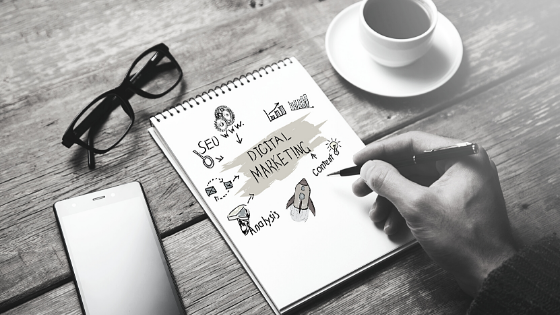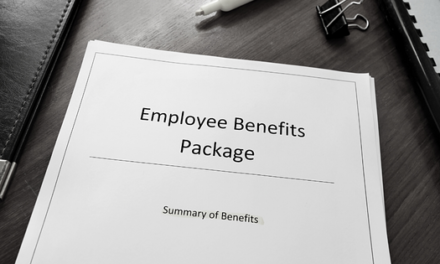When running a small business in any competitive area anywhere in Australia, you constantly look for ways to make your business attractive cost-effectively. Digital Marketing is one very popular method which works. As a business coach, the subject of marketing is constantly coming up. Digital marketing, using the internet and using technology is what we all need to do to promote and market our micro and small businesses.
I do want to stress, I am an advocate of digital marketing, however, this should be done in conjunction with offline and local advertising methods as well. A strong and healthy marketing strategy is balanced and contains a reasonable degree of variety and diversity.

Here are some of the digital marketing approaches to successfully market your business which will not break your bank
1. Setting Your Goals and Your Budget
As always been said and suggested in any circumstance, setting the goal for your digital marketing is first and foremost. Define the end-game of your enterprise and strategise your budget. Which among your options is relevant for your business? Decide whether to maximize your local exposure or just extend your reach. What exactly are you looking for, conversations or brand awareness or someone to ‘buy now’? Prioritise your goals by assigning the most immediate need of your business and its most significant long-term objective.
2. Have a Great Website with Well-actioned SEO
Before you can action pay per click, Adwords or any other online marketing strategies, you need to have an excellent website and have had the SEO (Search Engine Optimisation) done on it. Visual and written content, easy to manoeuvre, updated and current. Ensure it looks great on iOS, Android, tablet, laptop and larger desktop. Test on friends if you don’t have multiple devices. The footer should contain your contact info, suburbs you service and a Quick Links segment to your key services.
3. Paying for Continuous Play
Online marketing is different from more traditional marketing concepts such as print. Whilst with print you tend to have a single (and larger) spend, online works most effectively when it’s regular and ongoing. You need to spend regularly and consistently for search ads, social ads, display ads etc. Sure, you can cut back a little if you are getting slammed with work, but never turn it off as often what happens is that you forget about it, until you realise the work has slowed significantly or even stopped. The second most important aspect of marketing is to keep doing it consistently! Yes, I know you are asking “so what is the first most important aspect of marketing?” Get started!
4. Capitalising on the Local Offerings of Google
Control the information regarding your business by creating your Google My Business account. Information may include the address of your business, its website, phone number and operating hours. Your business may appear on Google Map or website with your new local search ads. Note that businesses with online presence grow faster when compared to those without digital exposure. Check the information of your business in Google.
5. Champion on the Right Social Channel
Let’s face it; social media can be overwhelming and difficult to deal with and can chew up a massive amount of time. There is LinkedIn, Instagram, Google+, Twitter, Facebook and Pinterest just to name the top ones and don’t forget YouTube as well. That’s just the top players; there are heaps of other ones too. To do everything can be quite overwhelming. There is no assurance after all this time that it will work – although often it does. With social media, if done properly, you will get out of it what you put into it. Make the most of this platform, even to brag about your business, project completions, sharing your business expertise, hitting big milestones, or award announcements. However, if you can’t do heaps, then select the top three which work best for your business. For example, myself as a business coach, if I had to choose between Facebook and LinkedIn then the selection would be LinkedIn because more of my prospective clients are there. For more personal or business to consumer services (or products) then Facebook may be more the place to be. Analyse the existing social media presence of your business to determine your highest engagement. Far better to do fewer things and do them well than to be on everything and make a mess of it all.
6. Video is Taking the World by Storm
Video is just taking over. It is now searched more than Google and engages people so well. We can do video testimonials, video instruction manuals, video tips and so much more. There is Facebook Live. You have many options; you can do it yourself on your phone or get a professional to action your videos for you. It often depends where they will be used. If it’s the introduction to your business and you are a professional service, then I’d not recommend the ’selfie’ approach. Myself, if providing tips, I will often record myself but have it ‘put together’ by a video editor … the halfway approach. I remember an IT company years ago who send through his quote with a personal video message introducing it. Five years ago, he was way ahead of the times. My boot camp PT often sends me a personal video. How can you incorporate video into your business?
7. Email Marketing
Email marketing is great for small businesses as it allows you to build the loyalty of your customers. It gives you the opportunity to send event or sale notifications if your prospects and customers are handing you over with email addresses. People seem to be more loyal and engage with an enterprise that takes time to announce an award, new employees or big events; and one that shows humanity. One important ingredient of email marketing; don’t just sell. Engage with your audience and either entertain them, inform them or educate them. Go straight into sell mode and watch the ‘unsubscribe’ notifications roll in.
8. Publishing a Blog
Fun aside (yes, I do love writing, so blogging for me is a pleasant task), blogging can be very beneficial for the branding and exposure of your business. Demonstrate to target customers your expertise and that you are the ‘go-to’ person in your industry or field. Whilst the ideal is to publish a blog post with utmost quality and consistency once every week, if you are new, start with once a month and work your way up to weekly. If you never get to weekly but you are able to do twice a month, then that is still really good. Ideal lengths are around 1200 words, but if you struggle with this, start with a goal of 800 words and build yourself up. You will still see the results.
9. Keyword Researching for SEO
If you have a WordPress website, then it’s critical you have had the SEO (search engine optimisation) turned on at the back end of your website. You can also pay for additional SEO, but if you are working on a budget AND you are doing other things, like blogging, then (in my opinion) you don’t have to spend a fortune on SEO every month. However, be sure that every month you review the backend of your WordPress site (which has minor SEO functions built-in) and ensure most of your ‘ticks’ are green. If most of the ticks are yellow or red, then get an SEO expert in to fix this. All your content, images and blogs should be keyword rich but not keyword laden. Over-stuffing keywords into your pages or blogs will actually not work for you. As someone who blogs successfully a lot, I find that by writing for my audience and giving great content is my primary goal. I don’t sit down with a list of keywords and work out how to fit every one of them into the article.
10. Sharing Your Knowledge
Knowledge you can share may include speaking at local conferences, webinars, and YouTube tutorials. Video is being searched now even more than Google. Where possible you can repurpose your corporate presentations and other items and put them out there as videos. Make sure that your chosen topic is hot in your respective industry. Remember one little tip, YouTube is owned by Google and Facebook is Google’s competitor, so if you want to post a link into Facebook, you will get better results (size and exposure) if the link is to your website rather than direct to YouTube.
11. Leveraging the Value of Relationships and Networking
LinkedIn serves as an effective gateway in finding others in the industry by joining forums and chat groups. Take yourself offline also by developing relationships (perhaps initially started online) in a more personal manner. Meet with them for coffee, invite them to physical networking events and actually go to networking events as well. Whilst you started online, be realistic and understand the nature of relationships; most people want to know a person ‘in person’. Whilst I provide business coaching services remotely (so can service anywhere in Australia) the reality is that most people want to meet with me at least once, for real, face to face. Humanity hasn’t evolved so much so that we’ve lost that desire for actual contact.
12. Surveying, Listening, Learning
Best businesses constantly improve as you go through feedback search. Ask your customer to provide a comment based on their experience after service completion. Offer a small incentive for people to do surveys or even do a review. This could be a discount, gift card, book, eBook or even chance to win an iPad. Feedback is critical; why do you think large retailers have Frequent Flyer cards or stores ask you for your postcode? It’s all about gathering information and learning.
13. Online Listings
Don’t forget great online listings which will give you quality backlinks. I emphasize quality as not all backlinks are good for your business. Where the backlink or other site is irrelevant, i.e a totally unrelated business in another country, Google won’t like you. However, relevant listings or on quality sites are absolutely good. A great example is ‘True Local’. Be sure also to get your clients to give you reviews on the site where applicable. A tradie client of mine rang me last week, excited he’d got two leads in a single day from True Local after I kept pushing him to get his customers to review him there and a few did.
14. Testimonials & Reviews
Reviews, endorsement and testimonials should also be all part of the strategy. Like getting Facebook Likes, we should also be aiming for other reviews and testimonials. LinkedIn is a great place to give and have listed testimonials. However, these don’t just happen or fall into your lap. You have to give to receive, you have to ask and you have to be proactive and consistent in working these methods. Don’t forget Google reviews as well – this will absolutely help your website ranking.
With these viable strategies for your small business, I’m pretty sure that the digital marketing of your business will very soon start achieving your tangible results.



















